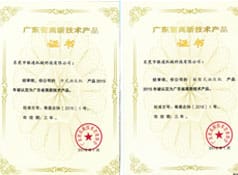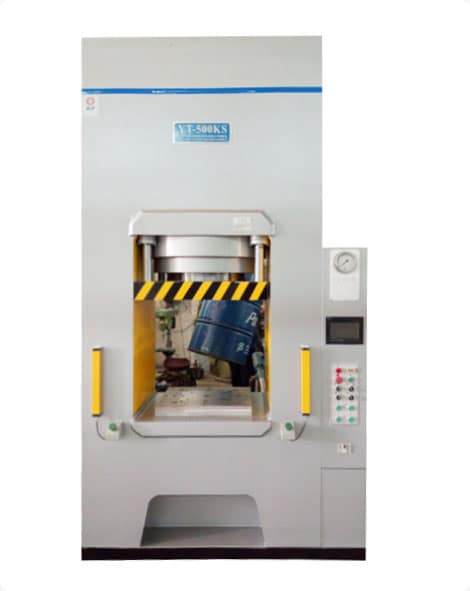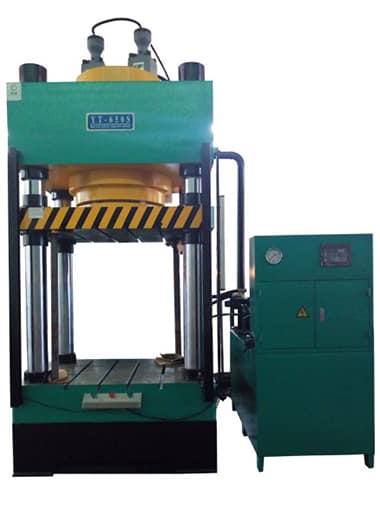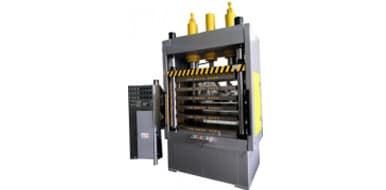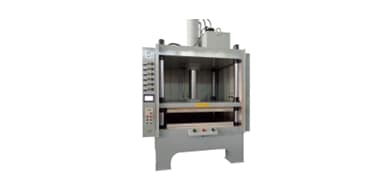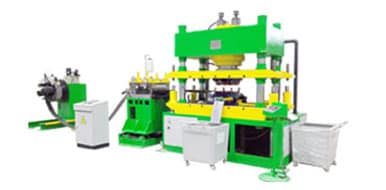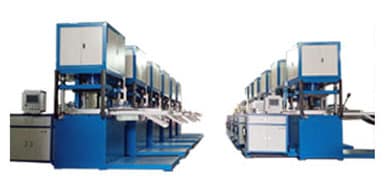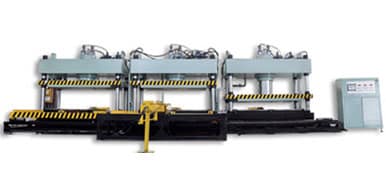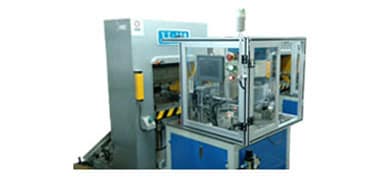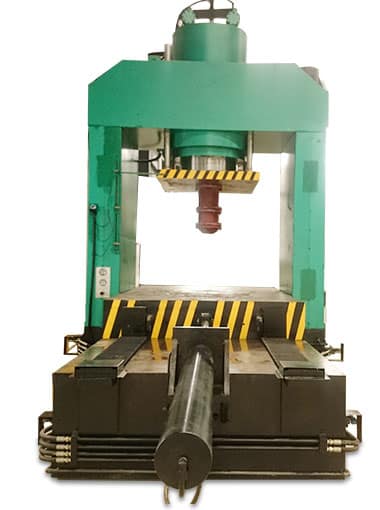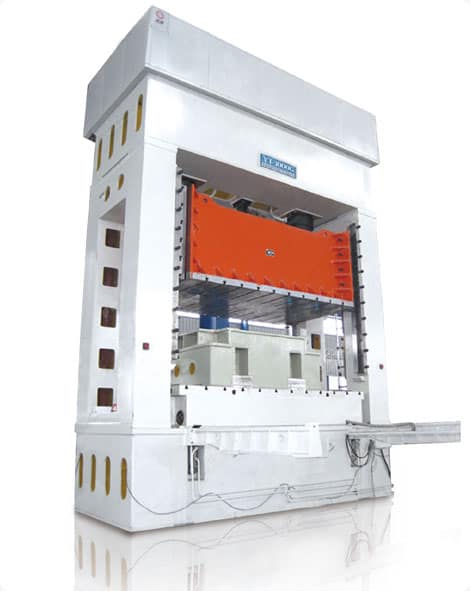How Much Force Does a Hydraulic Press Exert?
time:2023-08-31 views:(点击 1,033 次)Hydraulic presses play an integral part of many manufacturing processes. Utilizing Pascal's Law, these powerful machines produce immense force by pushing liquid through small cylinders into one large one.
When activated, hydraulic pumps pump oil into a system which becomes pressurized, sending that pressure directly to a master cylinder where it presses against the piston, producing enormous force.
How it Works
Hydraulic presses are powerful machines that employ an enclosed fluid system to create compressive forces, used for shaping and deforming materials into various forms. Common uses for hydraulic presses include deep draws, shell reductions, urethane bulging, forming blanking and punching applications. They offer advantages over their mechanical counterparts in terms of higher speeds operation as well as producing greater force with reduced energy use.
Pascal's Law dictates the operation of hydraulic presses. According to this principle, any change in pressure applied to a contained liquid is transmitted undiminished throughout it and into its container walls, amplifying small forces into larger ones; enabling relatively small cylinders to move very large weights with relative ease.
One key difference between hydraulic presses and mechanical ones lies in their ability to maintain their full pressing power throughout a stroke, creating a more controlled and consistent process when working with delicate metals such as aluminum. This feature makes hydraulic presses especially suitable for delicate or hard materials that may otherwise prove challenging to press.
Hydraulic presses contain several components, but its core consists of cylinders and pistons - metal containers which house hydraulic fluid to provide pressure to workpieces; pistons are rod-like devices which move inside cylinders to push down on them; these parts are connected by an adaptor to a master cylinder via an inlet/outlet valve that regulates their fluid flows from and to one another.
Hydraulic power instead of electricity allows the system to be run more cost effectively and with greater uptime, as hydraulic components are less prone to breaking down due to heat or vibrations than electrical ones. Additionally, the increased uptime means fewer operating expenses overall and increased uptime compared to their electrical counterparts.
Hydraulic presses offer several benefits, including their versatility - they can be used for applications as diverse as forming, punching, bonding and powdered metal forming - in addition to those requiring precision such as press fits.
Cylinders
A hydraulic press works by filling cylinders with hydraulic fluid. A small cylinder, known as the slave cylinder, contains a piston used to apply pressure; its force is then transferred onto a larger master cylinder that exerts even more force onto material that needs pressing; this allows a hydraulic press to create such tremendous amounts of force.
Hydraulic presses come equipped with various-sized cylinders, often multiple smaller cylinders for greater force control. Furthermore, these presses use a pump and hydraulic accumulator between their cylinders in order to produce even force distribution that surpasses mechanical systems.
Cylinders can also be powered by electric- or air-operated pumps to lower maintenance costs and downtime, and offer greater reliability than mechanical presses in terms of handling more tonnage per hour.
Another key advantage of hydroforming presses is their ability to consistently deliver full press force throughout their stroke, making changes without waiting for the press to complete its cycle and restart - this makes hydroforming an efficient and cost-effective method of shaping metals and other materials.
A hydraulic press works on Pascal's principle, which states that force applied to a liquid remains constant throughout a system. Therefore, pressure on small pistons in slave cylinders equals force applied on large pistons in master cylinders - effectively producing the same force across the board.
Force from the slave cylinder pushes against a plate in the master cylinder, creating pressure that moves a ram. Once moved, this ram can press against any material being worked on to either punch it out or crush it down into thinner sheets. Industrial hydraulic presses also feature press plates against which force can be exerted to produce desired results.
Pistons
While not as visually impressive as lithium-ion batteries or as complex as torque-vectoring differentials, pistons remain essential components in all internal combustion engines. Sitting within its respective cylinder, they perform vital actions by pressing up against air-fuel mixture to compress it, before pushing down to ignite it - an action which produces tremendous heat and pressure that must be endured by both piston and its walls during air-fuel explosion.
The piston is propelled upward and downward by the crankshaft's rotation, enclosed within an enclosed cylinder and gas-tight sealed with piston rings to maintain its gas tightness. Piston movement transforms liquid or gas expansion energy into rotational motion; consequently it plays an essential part of engines, reciprocating pumps, gas compressors and hydraulic cylinders.
Pistons are typically cast or forged from aluminium alloy, with either method producing stronger, more durable pistons that can withstand engine temperatures and pressure better. Casting involves heating the alloy until it liquefies before pouring it into a mould while forging is more complicated and requires heating it until malleability allows it to be forced through a die under high pressure; both methods create stronger pistons capable of withstanding harsh engine environments.
There are various piston designs, each offering their own set of advantages and disadvantages. A flat-top piston features the least surface area to create an effective explosion in the combustion chamber, but may require higher compression ratios that may make running older engines too challenging.
Pistons typically feature grooves on their skirt to hold oil and compression rings in place, with either full or hollow piston skirts depending on engine design; those used in petrol engines typically feature full skirts while diesels use hollow (or "topland") ones to make room for their valves.
Most pistons are attached to their connecting rod using a pin, commonly referred to as a wrist pin or gudgeon pin, that passes through holes in both big end bosses for connecting rod and piston respectively. This enables pivoting on the pin; some designs use semi-floating wristpins; whereas other designs have fully floating wristpins that allow free movement within both components.
Weight
Weight of Pistons/Cylinders in Hydraulic Press | H&K Engineering Corp. The weight of pistons/cylinders used in hydraulic presses has an enormous influence on their force-generating capability, but engineers know exactly how much pressure their systems can generate - this allows them to ensure that each hydraulic press designed is designed specifically to perform work safely and accurately for specific applications.
Knowledge of how to calculate the tonnage of a hydraulic press is essential for anyone planning on using one for work. Doing so ensures that it can handle whatever is being pressed without damaging equipment or injuring its operator, preventing further incidents or injuries. When calculating tonnage it's important to keep certain factors in mind: firstly the size of press will dictate how much pressure can be exerted while material being pressed will impact how much force can be generated.
Size of Cylinders. Cylinders must be large enough to contain enough liquid in order to generate force while also offering space for pistons to move within them.
Hydraulic presses can be utilized for an array of tasks, from deep drawing and metal forming to hammering and punching, shell reduction, urethane bulging and assembly. Their usage varies based on tonnage; some presses offer high-volume production while others give greater control of their process.
Hydraulic presses are highly effective tools. Their strength enables them to shape materials precisely while amplifying small forces into an immense amount of force - characteristics which make them invaluable tools in metalworking applications such as forging, deep drawing and stretch forming.
Dake Machine Tool offers expert knowledge in hydraulic presses since 1887, as a longtime leader in manual and hydraulic press production. Their options for hydraulic presses include air or electric pumps with single or double acting cylinders for optimal results.
Link to this article: https://www.ihydraulicpress.com/nsn/4560.html
Hot Articles
-
How to Make a 20 Ton Hydraulic Press
Hydraulic presses can be used for numerous tasks, including forming, clinching, moulding and punching. Furthermore, they can also be utilized for st……
-
How to Make a Manual Press Into a Hydraulic Press
Before purchasing a manual hydraulic press, carefully assess your needs. These presses can be used for KBr pellet preparation, XRF sample preparat……
-
How to Make a Hydraulic Press at Home
Hydraulic presses are incredibly useful tools in both home and professional environments, from DIY models to large die-forging presses – the……
-
How Can Make a Small Hydraulic Hot Press?
Hydraulic presses use fluid pressure to compress, assemble, punch, trim, stamp, and stretch materials – offering limitless engineering possibi……
-
How to Make Hydraulic Press Pocket Super-Viral Videos
After his video went viral, Vuohensilta’s workshop quickly became a draw for visitors looking to experience the thrill of having objects cru……
-
How Much Money Does Lauri Vuohensilta Make With His Hydraulic Press Channel?
Lauri Vuohensilta of Finland launched his Hydraulic Press Channel in 2015 and has seen it gain immense popularity ever since. The videos displayed……
-
How to Make a Ring Using a Hydraulic Press
Do you know how hydraulic presses work? In this blog post, I will outline their operations principles and demonstrate their operation with example……
-
How Much Does a Hydraulic Press Weight?
Hydraulic presses are powerful manufacturing technologies. Used for various metal shaping and forming processes such as moulding, forging and blanki……
Latest News
-
Can You Make a Tortilla With a Hydraulic Press?
Hydraulic presses can be an indispensable asset to any kitchen. From creating tortillas to shaping metals, a hydraulic press can serve many import……
-
Hydraulic Press Channel – How Much Money Does the Hydraulic Press Channel Make?
The Hydraulic Press channel on YouTube has become one of the most viewed, with videos featuring Finnish factory owner Lauri Vuohensilta using his ……
-
How to Make a Hydraulic Press at Home
Hydraulic presses are versatile tools used for multiple purposes, including crushing objects. Operating one at home is straightforward with the ri……
-
How to Make a Hydraulic Press For Forging
Hydraulic presses provide an efficient method for producing precise parts with their power system eliminating costly gears and brake systems. Hydr……
-
How to Make a Small Hydraulic Press
Have you seen videos on YouTube of hydraulic presses crushing items such as bowling balls or soda cans with immense force? They generate great dea……
-
How Much Does a Hydraulic Press Weigh?
A hydraulic press is a machine that employs Pascal’s principle to generate large amounts of force. It consists of two cylinders: a smaller sla……
-
How Can You Make a Manual Press Into a Hydraulic Press?
Manual hydraulic presses come in all sorts of shapes, sizes and styles – H frames, C frames or with one or two cylinders and different beam qu……
-
How to Make a Hydraulic Press With Syringes
By filling two different-sized syringes with water, demonstrate that hydraulic systems act as force multipliers. This is similar to how cars lift he……



